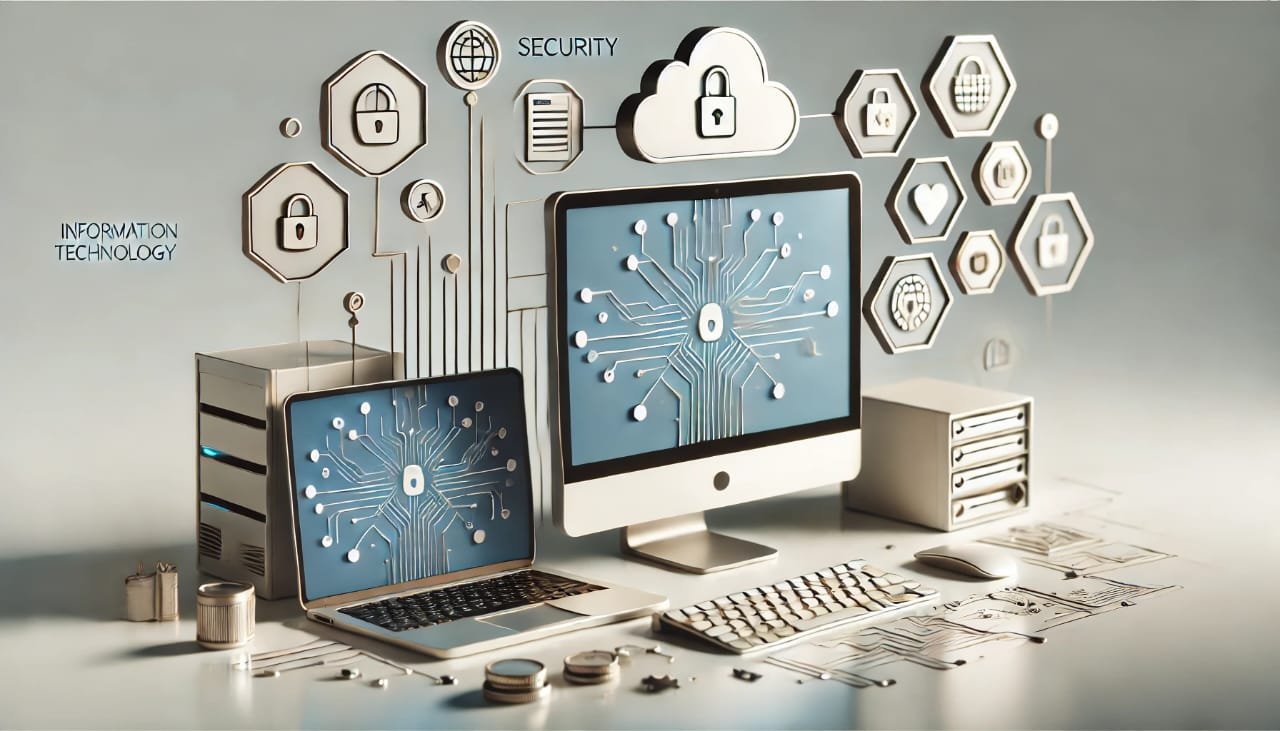In today’s digital age, Information Technology (IT) is more than just a buzzword. It’s an essential part of our everyday lives, from the moment we wake up and check our smartphones to the second we shut down our computers at night. Whether you’re a business owner, a student, or someone simply trying to stay tech-savvy, having a basic understanding of IT can go a long way.
In this blog post, we’ll dive into what Information Technology (IT) really means, why it’s important, and how it impacts our world. We’ll also explore common IT components like hardware, software, networking, and how IT professionals keep systems running smoothly. By the end of this post, you’ll have a clear picture of what IT is and how it affects you, both personally and professionally.
What is IT (Information Technology)?
Simply put, Information Technology (IT) refers to the use of computers, software, networks, and other electronic systems to store, process, and manage data. IT covers everything from the apps on your phone to the servers that keep your favorite websites up and running.
IT is the backbone of modern-day technology. It allows businesses to operate efficiently, helps us communicate with others globally, and supports the endless flow of information we rely on daily. Without IT, the digital world would grind to a halt.
Components of IT (Information Technology)
To better understand IT, let’s break down its key components:
- Hardware: This includes physical devices like computers, servers, and storage devices. Hardware forms the foundation of IT systems, allowing us to input, process, and store data.
- Software: Software refers to the programs and applications that run on hardware. It includes operating systems like Windows or macOS and apps like Microsoft Word, Zoom, or even Instagram.
- Networking: Networking connects devices and systems, enabling communication and data sharing. Think of Wi-Fi, Ethernet cables, or mobile data — all of these are part of networking.
- Data Storage: Data storage refers to how information is stored on devices. This can include cloud storage services like Google Drive, physical storage devices like USBs, or hard drives.
- Cybersecurity: Protecting IT systems from unauthorized access, viruses, or data breaches is crucial. Cybersecurity involves safeguarding data and ensuring that sensitive information stays protected.
Why IT is Important in Today’s World
Imagine a day without your smartphone, computer, or the internet. Sounds impossible, right? Information Technology plays a critical role in almost every aspect of modern life. Here’s why IT is so essential:
- Communication: IT enables instant communication through emails, messaging apps, and video calls. Whether it’s a Zoom call for work or a FaceTime chat with a friend, IT makes it possible.
- Business Operations: From small startups to large corporations, businesses rely on IT to manage operations, track inventory, process transactions, and more. Without IT, many businesses wouldn’t be able to function.
- Data Management: Companies store vast amounts of data, from customer information to business reports. IT systems help organize, manage, and protect this data, ensuring businesses can make informed decisions.
- Education: IT is a cornerstone of modern education. Online classes, digital textbooks, and research databases allow students to access information and learn from anywhere in the world.
- Healthcare: The healthcare industry uses IT for patient records, diagnostic tools, and even remote consultations. IT helps doctors and nurses provide better care through technology.
IT in Everyday Life
You might not realize it, but Information Technology touches almost every aspect of your daily life. Here are a few ways IT plays a role:
- Online Shopping: When you buy something on Amazon or any e-commerce site, IT systems handle the entire process, from browsing items to processing payments and tracking shipments.
- Social Media: Platforms like Facebook, Twitter, and Instagram run on complex IT systems that store user data, process interactions, and deliver content to millions of people every second.
- Banking: Most people manage their finances through online banking apps or websites, which rely on IT to keep accounts secure, process transactions, and provide services 24/7.
- Entertainment: Streaming services like Netflix, Spotify, and YouTube use IT to store massive libraries of content and deliver it to users across the globe.
The Role of IT Professionals
Behind every IT system, there are skilled professionals who ensure everything runs smoothly. These IT professionals manage, troubleshoot, and secure networks, databases, and systems. Here are some of the roles they play:
- Network Administrators: They manage and maintain network infrastructure, ensuring devices are connected, and data can flow seamlessly between systems.
- Software Developers: These are the people who create the apps and programs we use daily. From designing a user interface to writing the code that powers it, software developers play a key role in IT.
- Cybersecurity Experts: With cyber threats on the rise, these professionals protect systems from hackers, viruses, and data breaches, ensuring sensitive information stays secure.
- IT Support Specialists: When you have a tech problem, these are the people you call. IT support specialists help resolve issues, whether it’s troubleshooting hardware or fixing software bugs.
How IT is Shaping the Future
As technology advances, so does the role of Information Technology in shaping the future. Innovations like artificial intelligence (AI), machine learning, and cloud computing are revolutionizing industries and the way we live.
- Artificial Intelligence (AI): AI is making systems smarter by allowing them to learn from data and make decisions. From virtual assistants like Siri to autonomous cars, AI is changing how we interact with technology.
- Cloud Computing: Instead of storing data on physical devices, cloud computing allows businesses and individuals to store and access data remotely. This makes collaboration easier and reduces the need for large data storage infrastructure.
- Automation: IT is driving automation in industries like manufacturing, logistics, and even healthcare. Automated systems are making processes more efficient, reducing human error, and cutting costs.
Conclusion: Why IT (Information Technology) Matters
Information Technology (IT) is more than just computers and gadgets; it’s the backbone of the modern world. Whether you’re streaming a movie, running a business, or just browsing the internet, IT touches every part of your life.
Understanding the basics of IT can help you navigate this digital age more effectively. With technology constantly evolving, staying informed about IT is essential for personal growth, business success, and staying connected in today’s world.
FAQs About IT (Information Technology)
1. What does IT stand for?
IT stands for Information Technology, which involves using computers, networks, and software to manage and process information.
2. How does IT impact businesses?
IT helps businesses run efficiently by streamlining operations, managing data, and enabling communication. It also enhances productivity and enables global collaboration.
3. What are common careers in IT?
Common IT careers include software development, network administration, cybersecurity, IT support, and data analysis.
4. What are the key components of IT?
The key components of IT include hardware, software, networking, data storage, and cybersecurity.
5. Why is cybersecurity important in IT?
Cybersecurity protects sensitive information and IT systems from unauthorized access, cyber-attacks, and data breaches, ensuring that personal and business data remains secure.
Understanding IT is no longer just for tech professionals — it’s for everyone. The more you know about Information Technology, the better equipped you’ll be to thrive in this tech-driven world.









